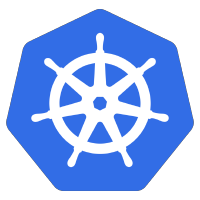 Instead of deploying a pod or service and periodically checking its status for readiness, or having your automation scripts wait for a certain number of seconds before moving to the next operation, it is much cleaner to use ‘kubectl wait’ to sense completion.
Instead of deploying a pod or service and periodically checking its status for readiness, or having your automation scripts wait for a certain number of seconds before moving to the next operation, it is much cleaner to use ‘kubectl wait’ to sense completion.
Wait for pod
Here is how you would wait for READY status on a newly deployed nginx pod.
# deploy test pod
kubectl run mynginx -n default --image=nginx:latest --restart=Never
# manually list items[].status.conditions[]
kubectl get pod -n default -l run=mynginx -o jsonpath="{.items[*].status.conditions}" | jq
# use 'wait' to check for Ready status in .status.conditions[]
kubectl wait pods -n default -l run=mynginx --for condition=Ready --timeout=90s
Wait for deployment
Another example is checking for a deployment to be fully available. In this case we have a deployment named golang-hello-world-web.
# test deployment kubectl apply -f https://raw.githubusercontent.com/fabianlee/k3s-cluster-kvm/main/roles/golang-hello-world-web/templates/golang-hello-world-web.yaml.j2 # restart, then wait using 'rollout status' kubectl rollout restart deployment golang-hello-world-web -n default kubectl rollout status deployment golang-hello-world-web -n default --timeout=90s
Wait for service
Services are trickier because ‘wait’ looks for a conditions list, which is not available. Instead you have .status as shown below.
$ kubectl get service -n ingress-nginx ingress-nginx-controller -o jsonpath="{.status}" | jq
{
"loadBalancer": {
"ingress": [
{
"ip": "192.168.2.143"
}
]
}
}
It looks like this will not be addressed until v1.23, so until that time, you can check for a non-empty value like below.
while [[ -z $(kubectl get service -n ingress-nginx ingress-nginx-controller -o jsonpath="{.status.loadBalancer.ingress}" 2>/dev/null) ]]; do
echo "still waiting for ingress-nginx/ingress-nginx-controller to get ingress"
sleep 1
done
echo "ingress-nginx/ingress-nginx-controller now has ingress"
REFERENCES
stackovflow, waiting for service assigned to LB
stackoverflow, how to wait for service to get external ip
NOTES
status conditions for pod
# list all status conditions[]
kubectl get pod -n default -l run=mynginx -o jsonpath="{.items[*].status.conditions}" | jq
# get just the 'Ready' condition
kubectl get pod -n default -l run=mynginx -o jsonpath="{range .items[*].status.conditions[?(.type == 'Ready')]}{.type} is {.status}{end}"
status conditions for deployment
# list all conditions[]
kubectl get deployment -n default golang-hello-world-web2 -o jsonpath="{.status.conditions}" | jq
# use range to show all conditions and extract fields
kubectl get deployment -n default golang-hello-world-web2 -o jsonpath="{range .status.conditions[*]}{.type} is {.status}{'\n'}{end}"
# get just the 'Available' condition
kubectl get deployment -n default golang-hello-world-web2 -o jsonpath="{range .status.conditions[?(.type == 'Available')]}{.type} is {.status}{'\n'}{end}"
Manually checking deployment conditions
# manually list items[].status.conditions[]
kubectl get deployment -n default golang-hello-world-web -o jsonpath="{.status.conditions}" | jq
delete objects created in this article
# delete pod kubectl delete pod mynginx -n default # delete deployment kubectl delete -f https://raw.githubusercontent.com/fabianlee/k3s-cluster-kvm/main/roles/golang-hello-world-web/templates/golang-hello-world-web.yaml.j2
Waiting for deployment like this only works for initial deployment (not rolling)
# this wait for 'Available=True' only works for initial deployment, not rolling kubectl wait deployment -n default golang-hello-world-web --for condition=Available=True --timeout=90s